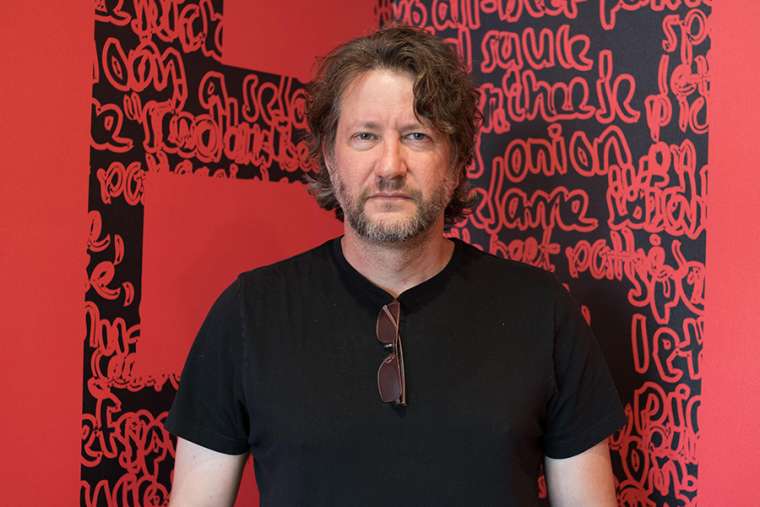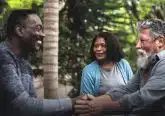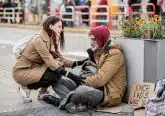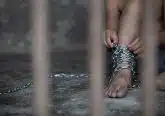Faith in the ‘back row’- An interview with Chris Arnade
by JD Flynn
Denver Newsroom, Apr 20, 2020 / 06:05 pm MT (CNA).- Chris Arnade is the author and photographer of “Dignity: Seeking Respect in Back Row America.”
His book is a look at how many Americans – in rural and urban communities across the country- live. Chris got to know people who often lack a voice in American public life, and his work aims to give them a voice, and a face. He talked with CNA about his book, his faith, and “Back Row America.”
Below is an excerpt, edited and condensed, from CNA’s interview with Arnade. The entire conversation can be heard here.
Chris, what is “Back Row America?”
“Back Row America” describes, in my simple framework, American communities that don’t necessarily define themselves by their resumes or their education.
It’s the part of America that has traditionally gone from high school to, to a job, a lifelong job that gave them the stability to build a family and then attend church regularly and stay in their community. That isn’t a red state or blue state thing. That’s true all across the country.
It’s African-American communities in northern cities, it’s working class rural communities in places like Iowa and Nebraska.
It’s in contrast to what I think is the much more powerful group of people, which I would call, using the classroom analogy, “the front row.”
The elites, if you will, who have spent their career or chasing building a resume, going to all the right institutions and ultimately ending up probably in a few handful of neighborhoods across the United States.
They generally have very large influences in academics, the media and politics and the business world. And I think so much of how we think about America is defined by the front row, when in fact the bulk of Americans would probably find themselves to be more familiar with the back row.
How did you get to know “Back Row America?”
While working on Wall Street in finance, I spent time walking in neighborhoods across New York City. Those walks became a way to meet people I might otherwise never meet. Eventually, I quit my job and spent three and a half or four years in one neighborhood in particular, the poorest neighborhood in New York called Hunts Point in the Bronx.
It was a wonderful neighborhood, I was immediately drawn in by the strong sense of community. At an artistic level as a photographer and it was just simply a great place to photograph because it faces the south, it has good light.
And then it just drew me in.
I spent time with a group of, to use a derogatory term because there’s no other terms, of homeless addicts, who lived in cars or lived in abandoned buildings, under bridges and spent their time making their money by either being a prostitute or stealing things or begging. And many used that money to buy heroin.
And they became the community that taught me for three and a half years.
And then from there I went in my car across the United States, I’ve put roughly about 400 000 miles over four years, just driving all the, around the United States, visiting places that people would tell me not to go to.
Visiting as much of the United States as I could, the parts that I call “back row America” that are not in the news in any other way other than negative. Towns that have lost their industry, inner cities that have never had industry, all sorts of places.
What I try to do in my book is both show what is common in this condition, but that there are variations, so to speak, on the theme and how people reflect their frustration and attempt to find dignity in different ways.
What were the things that you had found in Hunts Point and wanted to look for in other places?
One theme of my book is that the most salient and the biggest division in America right now is the educational divide. We all talk about class divide. We all talk about the racial divide. But I think the education divide is as important, if not stronger currently.
And that division is not just about how we vote, but it’s about how we view the world, and how we think about what is valuable in this world, and how we think about what gives us meaning. So, at a very deep level, what’s our philosophy? And what is our worldview?
And then that, if you are in the back, and that the front row controls things now. They generally are the “in” group. They define stuff. And it’s the back row who is the one who is suffering from the decisions made by the front row, who have a very narrow worldview that they can’t seem to think beyond.
If they do think beyond it, it usually means they either want to study the back row as sort of a scientific specimen or they want to pity them and save them without questioning their worldview.
And people know when they’re being laughed at. The front row isn’t directly laughing at people. But there is this sense of, again, when they view the back row, it’s often viewed as people who are wounded, to be pitied and helped, as opposed to people to be listened to as equals.














